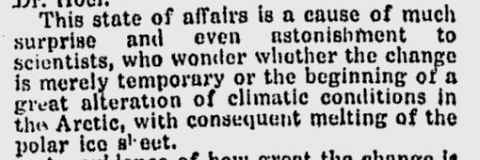No, thicker person, there is no baseline for the actual instruments because Hansen keeps "adjusting" them. Try to keep up with what;s being discussed instead of blathering on about your particular bit of drivel. We don't KNOW what the measurements are because they keep getting changed. Got it? That's the issue. If the instruments keep getting adjusted after the fact you don't know what the hell the readings are do you smart guy.
That's correct, you can't have an "average" if the meter is constantly being adjusted and/or calibrated.
Instrumentation is calibrated to "standards". For temperature that could be as simple as a container of ice water ... the temperature should read exactly 32 degrees F. For boiling ...212 degrees F at sea level. There are calibrated standards to do the same thing. If the meter is not calibrated, there can be quite a bit (comparatively speaking in tenths of degrees) of drift. If your meter is checked periodically and found to be "in tolerance", you can be sure the readings are accurate, usually within hundreds of a degree. If the meter is found out of tolerance, that should be noted and the meter data disregarded and the meter calibrated or replaced. Has this been done?
For most temperature readings in remote sites, a weather station is only checked when information is not being sent (transmitted). The calibration is not checked until it is very obvious the readings are inaccurate. The global warming religion uses these readings without verifying the accuracy.
This is true, even more to the point they use weather stations in built up areas that will be affect by the Urban Island Effect and don't correct for that warming at all. That's how they get "record" warm years year after year. But edthecynic is too smart to be taken in by that nonsense....right





